
Birch Trees: Discovering the Plant That Fascinated Cultures
Published: 17/04/2024 | Updated: 13/06/2024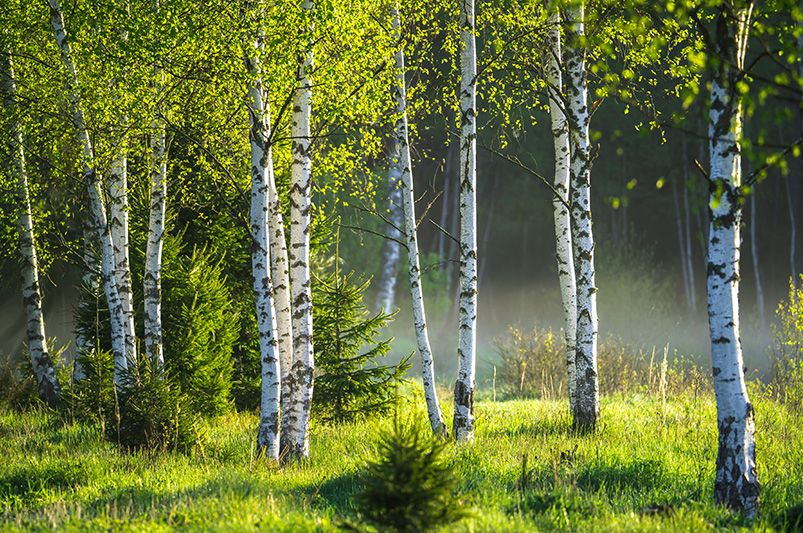
Everyone needs a corner of serenity in their backyard, where the delicate rustling of leaves and the chattering of songbirds introduce a quick stress-relieving tactic, reconnecting you to the real beauty of this world. This is what happens when you plant birch trees in your home garden. Popular for their elegant stature, distinctive bark, and whimsical flutter of leaves, birch trees can transform an ordinary garden into a haven of tranquility.


Growing a birch tree at home takes thoughtful consideration—choosing the perfect spot, understanding soil preferences, and knowing the care it demands. This article offers a full-scale review of birch trees from the ground up. We'll guide you through selecting the right birch species, ensuring that these majestic deciduous trees thrive to grace your garden.
An In-depth Overview of Birch Trees
Birch trees, belonging to the genus Betula, stand as a symbol of growth, renewal, and adaptability. With over 60 species scattered across the northern hemisphere, birches adorn landscapes with their distinctive white bark, which peels off in paper-like layers, and captivating vibrant foliage that transitions with the seasons.
History and Significance
What sets birch trees apart from other plants is that they bring a touch of historic charm to your garden. They have been an integral part of human life since ancient times and for good reasons. Early indigenous peoples revered the birch for its medicinal properties and utilized its bark for crafting canoes, shelters, and tools, a testament to its durability and flexibility. In various cultures, birches symbolize growth, rebirth, and purification — often celebrated in rituals and folklore.
Interesting Features
Bark
When the word birch crosses your mind, you can’t help but picture a bark— after all, it’s the tree's most distinguishing feature. The bark varies from species to species, ranging from the iconic white to silver, yellow, and even black. It can also have different textures and patterns, such as the smooth, shiny surface of the Cherry Birch (Sweet Birch), the interplay of smooth and coarse textures of Heritage Birch Tree, the peeling layers of the Paper Birch (Canoe Birch or White Birch), the gentle ruggedness of the Whitespire Birch, or the unique, shiny golden tone of the Yellow Birch (Silver Birch or Swamp Birch).
Leaves
Small, ovate, and serrated along the edges, the foliage of birch trees is a work of art that draws tons of attention to your garden. The leaves turn a brilliant yellow hue in the autumn, creating picturesque landscapes that draw nature enthusiasts (and photographers).
Just imagine bringing this breathtaking sight of nature right into your home. It feels too dreamy to be true, right? Well, with the help of Whitespire Birch, it’s not! Casting a luminous display of clear, bright yellow, reminiscent of soft sunlight on a golden beach, this birch tree puts on a stunning fall display. By bringing shades of orange, yellow, and gold to the scene, this plant creates a stark contrast with its dazzling white bark and shiny leaves.
Interested in other foliage plants that could transform your garden design in no time? Visit our market now and shop from a huge collection of show-stopping plants. Summon up a fiery, full-of-passion look with the brilliant displays of orange, red, yellow, and even purple of Japanese Red Maple. You can also bring some mystery to the scene with the burgundy leaves of Shiny Dancer Viburnum, or create an artsy vibe for your plot with the two-toned frosty foliage of Frosted Fire Sedum.
Growth Habit
Exhibiting growth habits that contribute significantly to their appeal in landscapes and natural forests, these deciduous trees generally grow quickly, especially in their early years, favoring cool, moist soils but able to adapt to a variety of conditions. They reach upwards, branches extending gracefully towards the sky, creating a light, airy canopy that provides dappled shade below.
While most birch trees boast majestic greatness with their ground-to-sky appeal like Dakota Pinnacle Birch, other medium-sized and dwarf species fit into small yards as Resin Birch and Bog Birch.
Creating a one-in-a-million view in your garden with these stunning plants calls for a well-curated landscape design. At ShrubHub, our talented designers turn ordinary outdoor spaces into verdant, living masterpieces. Each designer brings a unique blend of creativity, expertise, and passion for the natural world to their work. From Alabama to Wyoming and everywhere in between, we craft spaces that are not only beautiful but also sustainable and tailored to the individual needs and desires of each client.
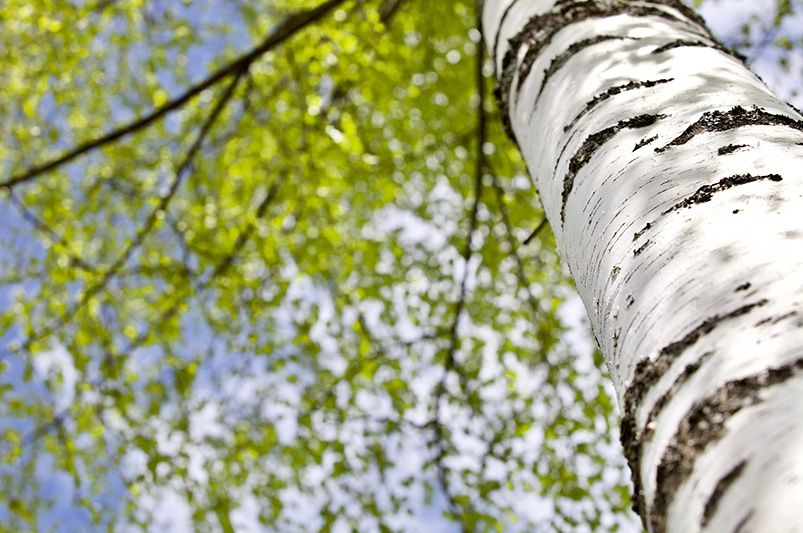
Uses
Ecological Impact
Birch trees play a pivotal role in forest ecosystems, supporting a wide range of wildlife. Their catkins provide seeds for birds, and their sap serves as food for insects, which in turn attract insectivorous birds. Plus, by absorbing carbon dioxide, birch trees act as natural air purifiers, improving air quality and mitigating the effects of greenhouse gases. Furthermore, their presence helps to regulate water cycles, reduce erosion, and provide shade, highlighting their multifaceted ecological importance.
Practical Applications
While birch trees stand as elegant symbols of the wilderness, their value extends far beyond their ornamental appeal, encompassing a wide array of practical applications. Historically and in modern times, the durable, lightweight wood of birch trees has been highly sought after for furniture making, turning, and even in the crafting of musical instruments. In addition, birch bark serves as a remarkable natural resource for waterproofing and as a fire starter due to its oil content, making it a staple in traditional and outdoor survival skills.
Culinary
Offering a surprising array of culinary uses, birch trees have deeply fascinated food enthusiasts and cultures around the globe. The lightly sweet and mineral-rich sap can be tapped in early spring, which can be turned into a refreshing drink or boiled down to create birch syrup, a unique alternative to maple with a complex flavor profile ideal for glazes, marinades, and baking. This syrup can also serve as the base for making birch vinegar, showcasing this stunning tree’s versatility. Additionally, young birch leaves and buds are edible and can be used fresh in salads or dried to make a delicately flavored tea, infusing a touch of the wild into everyday cuisine.
Medicinal
Long been valued in folk medicine, birch trees boast a myriad of health benefits. The sap or "birch water" tapped from the tree in early spring is a mineral-rich remedy, containing notable amounts of manganese and zinc, which contribute to overall well-being and are believed to have detoxifying properties. The leaves, rich in vitamin C, have been used in tea form as a diuretic and to help alleviate urinary tract infections. Besides, the birch bark, containing salicylates (the compound found in aspirin), has been utilized for its potential anti-inflammatory and pain-relieving effects. External applications of birch bark have also been explored for treating skin conditions like eczema.
Best Birch Trees to Grow in Your Garden
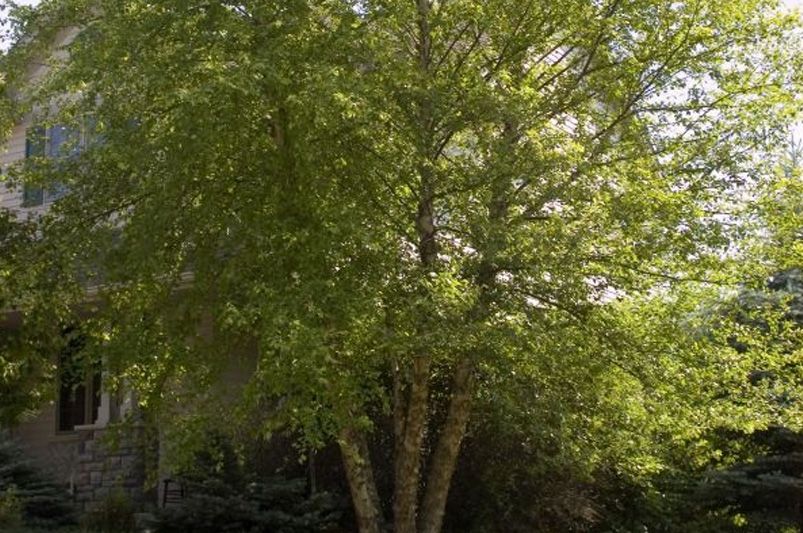
Heritage Birch Tree
The Heritage Birch Tree is renowned for its distinctive peeling bark, offering a combination of salmon, cream, and pink hues that create textured interest all year round. Growing up to 40 to 60 feet high, it enjoys a broad, pyramidal shape bearing lustrous green leaves, which turn into a yellow shade come autumn, bringing warmth and a comforting embrace to your space. This tree is also highly resistant to bronze birch borer and is high adaptability to various soil types, which means that it requires minimal maintenance. The Heritage Birch tree is one of the fastest-growing trees to have, which means that you can easily enjoy its shade and beauty.
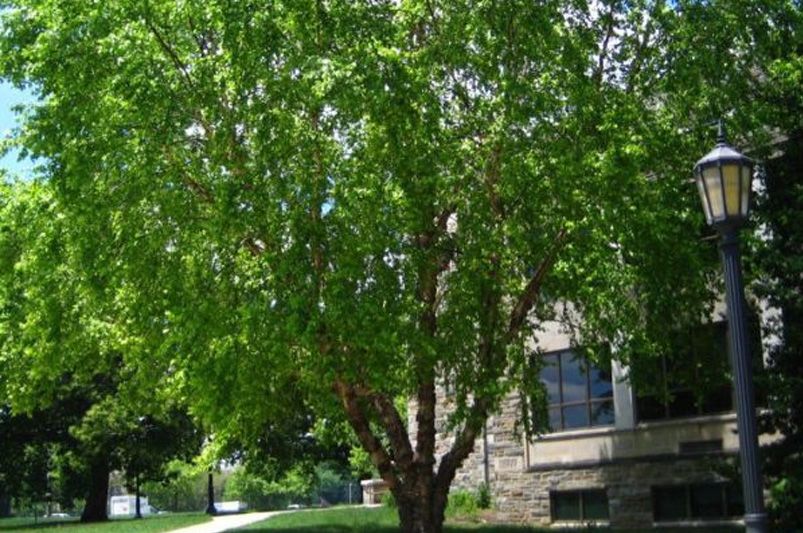
River Birch
As an epitome of resilience, River Birch ‘Betula nigra’ is often selected for its adaptability, mighty appearance, and the shade it generously provides. It is a larger tree, usually growing 40 to 70 feet high, with an attractive, slightly arching shape. River Birch boasts diamond-shaped medium green leaves that elegantly flutter in the breeze and become yellow in fall, while its silver to reddish-brown bark peels off, revealing a lighter inner bark. It is cherished not only for its striking aesthetic but also for its capacity to prevent soil erosion, making it a wonderful choice for you if you have a riverside garden or an area with poor drainage. The River Birch is highly resistant to bronze birch borer, which means it requires minimal maintenance. Additionally, individuals wishing to improve the appearance of their property can choose it because of the way its distinctive bark provides visual appeal to any environment.
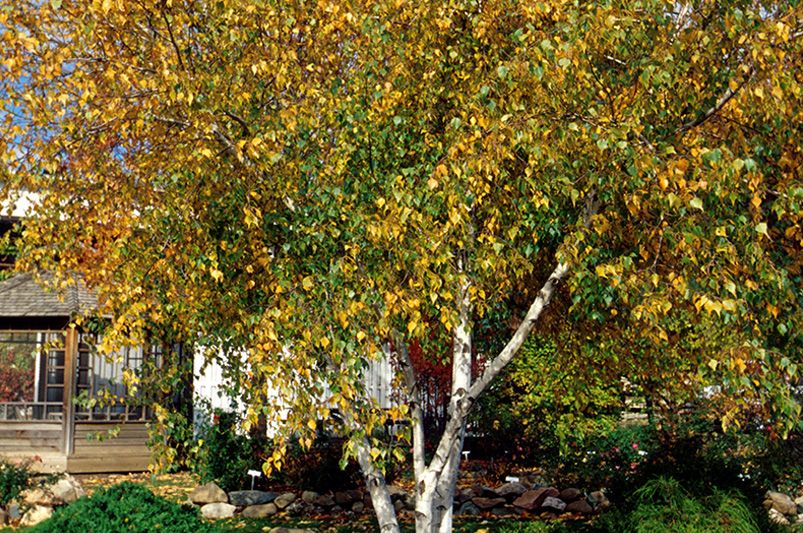
Whitespire Birch
Featuring striking white bark, which offers an exceptional silhouette against darker backgrounds or an evening skyline, Whitespire Birch reveals a genuine talent for lifting the mood of any scene. Growing between 30 to 40 feet, this tree has an upright and irregular shape that brings a touch of elegance to your garden. Its triangular dark green leaves provide a lovely contrast against the white bark and turn a delightful yellow shade come the fall season. Known for its pest resistance and hardiness, Whitespire Birch can serve as a unique specimen tree in your yard or be lined up for an attractive lawn border.
Take Your Landscape Design a Step Further With Birch Trees
Whether gracing a secluded forest, enhancing a public park, or standing proudly in a home garden, birches remain a symbol of nature's enduring grace and strength. Yet, choosing the right birch tree for your garden depends on local climate conditions, soil type, and the specific aesthetics you wish to enhance in your landscape. Each of these varieties carries its unique beauty and offers different functionalities, from erosion control to creating appealing contrasts, ensuring that your garden is not only functional but also visually stunning throughout the year.
Whether you’re in search of the elegant Whitespire Birch with its luminous bark, the stately River Birch known for its unique peeling texture, or any other variety, ShrubHub’s wide range caters to every taste and garden design. Beyond birches, the marketplace is a treasure trove of ornamentals, perennials, and everything in between, making it a one-stop shop for all gardening needs.


